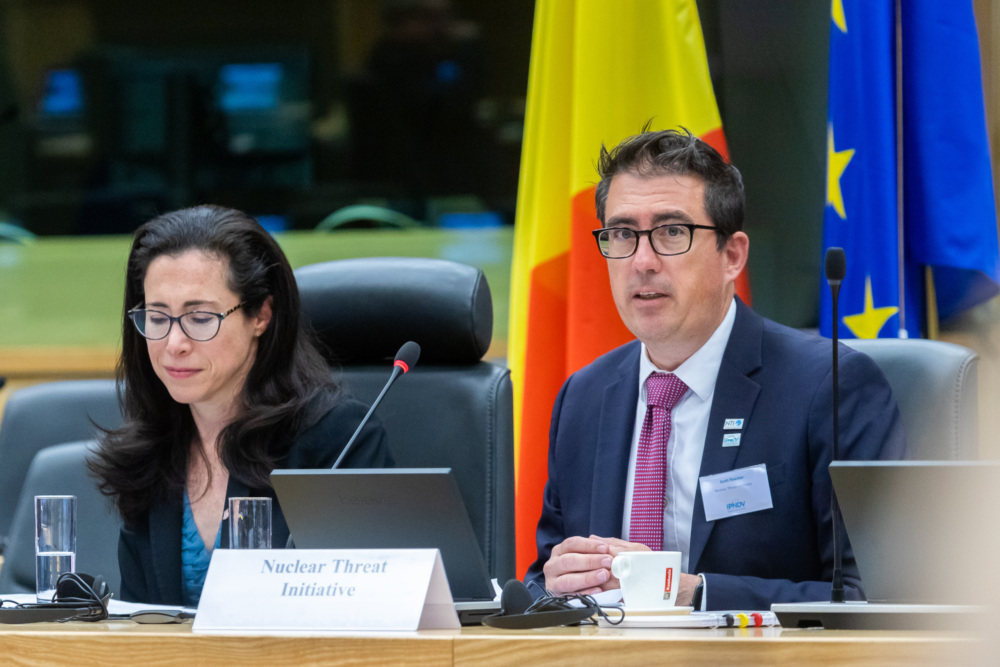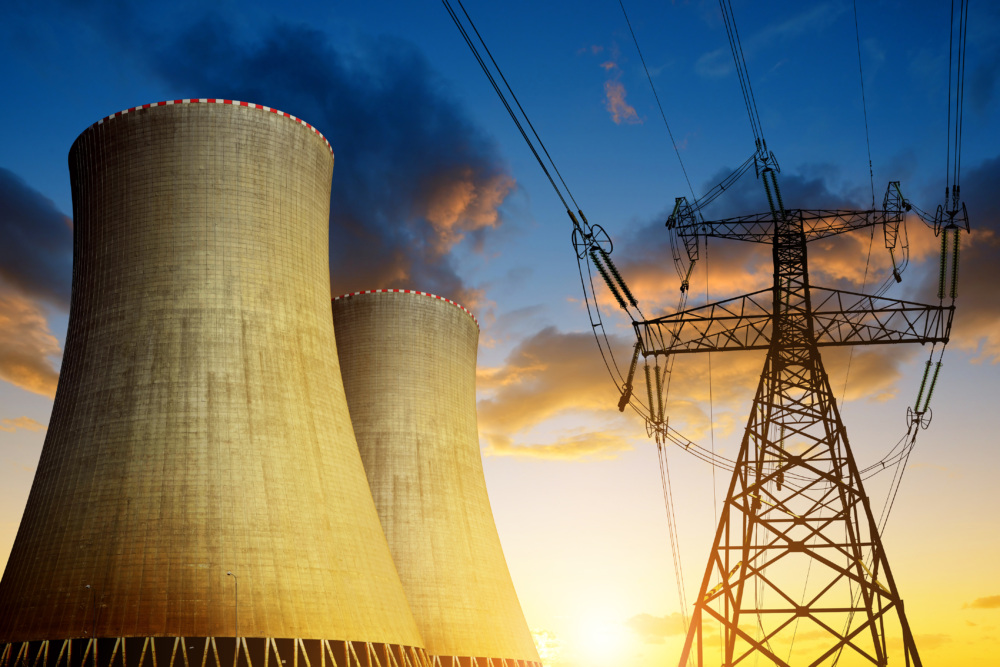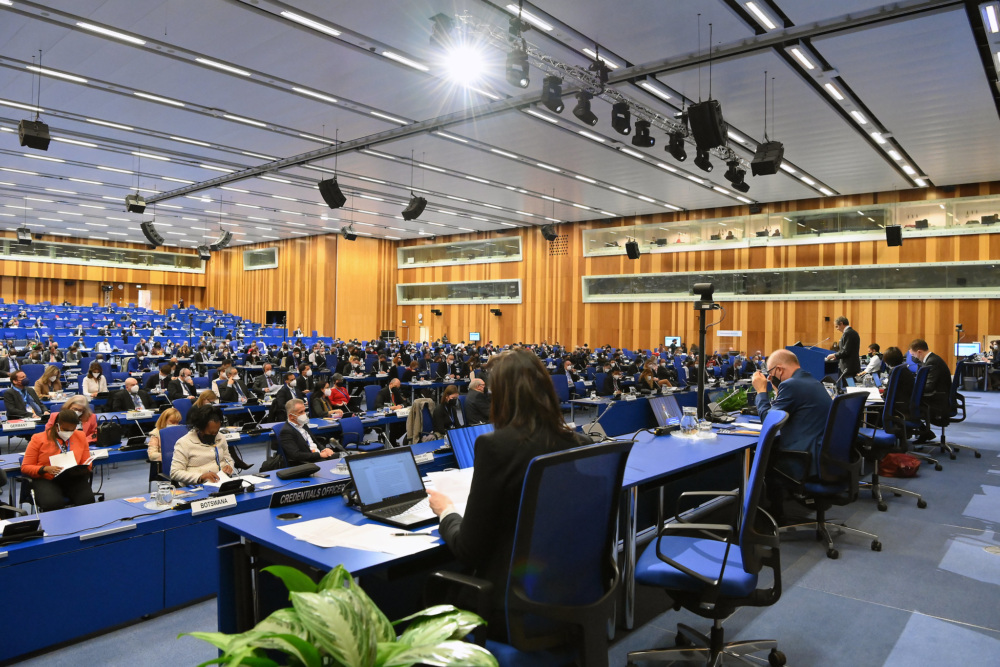
Samantha Neakrase
Senior Director
Atomic Pulse
The Nuclear Threat Initiative will join government
officials, experts, and representatives from nuclear industry as they descend
upon Vienna, Austria, for the third International
Conference on Nuclear Security (ICONS) hosted by the International
Atomic Energy Agency (IAEA). Perhaps too late in the season for glühwein, but
too early for Aperol Spritz, Vienna will nonetheless lend its charm as the
backdrop to this otherwise wonky event from Feb. 10-14.
What is ICONS?
First convened in 2013 and again in 2016, ICONS has become a
focal point for the exchange of ideas on nuclear and radiological security among
a diverse group of experts from governments, civil society, academia, and
industry from around the world. But it’s much more than a gabfest.
During the first two days of ICONS, we’ll hear national
statements from governments describing their actions and priorities for improving
nuclear and radiological security. This “ministerial” segment will end with a
joint declaration outlining global priorities and an agenda for the IAEA’s work
in these areas. The remainder of the week will feature panels with a mix of government
and non-government speakers on a broad range of nuclear and radiological security
topics.
Speaking of NGOS, NTI will be out in full force at ICONS,
presenting on panels and at side events and hosting events. For a full list of
NTI activities at ICONS, along with papers written by NTI experts, go to www.nti.org/ICONS2020.
And if you’re attending the conference, come visit our booth, located in the
Rotunda!
2020 ICONS in Context
This year’s ICONS, or ICONS 2020, is taking place at a
particularly important moment for global nuclear security, with the Obama-era Nuclear
Security Summits almost four years behind us and an important physical
protection treaty review conference scheduled for next year.
ICONS 2020 will allow observers to take stock of what
countries are doing to improve their own security and to support the
international institutions and initiatives that are vital parts of the global
nuclear security architecture.
Observers will be seeking clues that demonstrate the
strength of countries’ political attention and commitment to nuclear and
radiological security, whether due to a sense of urgency about the threat of
terrorism or a belief that strong security can build credibility and public
support for peaceful uses of nuclear technology, so that all nations can
benefit.
Experts also will be looking at what ICONS 2020 can tell us
about the path forward to next year’s review of the amended Convention on the
Physical Protection of Nuclear Material (CPPNM/A). This is the only legally
binding treaty requiring countries to protect nuclear materials and facilities
and is therefore the foundational international instrument for nuclear
security. Of the many ideas that I and other experts have proposed, perhaps the
most important is for states parties to make a decision at the 2021 CPPNM/A review
conference to hold future reviews and to select the next review conference
date. Robust, regular review conferences will allow countries to engage in
real, substantive dialogue on nuclear security, share assessments of trends
that impact how they implement the treaty, and will enable a more sustainable
treaty regime that can evolve as threats, technology, and best practices
evolve. (For more on why this is important, see Samantha Neakrase, “Strengthening
Nuclear Security with a Sustainable CPPNM Regime: An Ambitious Review of the
Amended CPPNM.”)
A User Guide: Identifying Signs of Success
So what should guide expert assessments at ICONS 2020?
Participation of Ministers: To demonstrate a
commitment to nuclear security, as well as support for the IAEA’s nuclear
security work, countries should send a minister to lead their delegations. In
2013, only 34 ministers attended out of 171 IAEA member states. In 2016, 47
ministers attended—a modest improvement. The number of ministers at ICONS 2020
will tell us whether attention on nuclear security is gaining strength or
receding. I’ll call 60 or above a success.
An Ambitious Ministerial Declaration: The ministerial
declaration should not be a recitation of ongoing activities or repetition of
other statements and declarations, like the IAEA General Conference nuclear
security resolution. The point of a ministerial session is to raise the level
of engagement above the usual bureaucracy. The ministerial declaration should
outline a robust set of priorities and demonstrate serious political commitment
to nuclear and radiological security coupled with ambitious actions. (For some
ideas on what an ambitious ministerial declaration would look like, see
Samantha Neakrase, “Promoting
an Ambitious, Forward-Leading ICONS.”)
National Progress Reports: It is easy to have a jaded
view about the utility of national statements based on past practices at ICONS
and other high-level conferences. Will countries come with the usual platitudes
or will they come with bold statements about nuclear and radiological security with
the aim of driving further progress? Countries can demonstrate greater
commitment and ambition by using ICONS as a platform to promote their own
progress and highlight recent achievements, showing that they take pride in
good security. The national statements should be viewed as a window into
whether nuclear and radiological security are serious ongoing national
priorities.
National and Joint Commitments: Countries also can
demonstrate their commitment to nuclear and radiological security by committing
to new actions to strengthen their own security and to strengthen the global
nuclear security architecture. Countries can announce new national commitments and
joint commitments with other countries, or join nuclear security INFCIRCs
(IAEA information circulars), which are joint commitments that
originated at the Summits and are now open to signature by all IAEA member
states. Example commitments include committing to implement IAEA nuclear
security guidance, minimize highly enriched uranium, host peer reviews, and
engage in information sharing, among many other activities.
Support for the IAEA: There are a range of
perspectives about the IAEA’s role in nuclear security, with some countries arguing
the IAEA should focus on technical cooperation and assistance to support
peaceful uses of nuclear material and technology, not nuclear security. But nuclear
security and peaceful use should go hand in hand, because public confidence in
security helps build a positive public perception of peaceful uses. The
ministerial declaration will tell us whether there is greater appreciation of
this linkage. A quick nod to the IAEA will indicate no real change in perspective.
In contrast, unequivocal statements of support for the IAEA’s central role in
nuclear security and commitments to support the IAEA’s nuclear security
activities, both politically and financially, will be a positive step.
A Roadmap for the CPPNM/A Review: Past ministerial
declarations have acknowledged the important role of the CPPNM/A and encouraged
countries that have not yet ratified it to do so. In 2020, many experts hope
the ministerial declaration will go further. On the wish list would be acknowledgement
that nuclear security must continuously evolve to keep pace with evolving
threats, technology, and best practices and evidence of support for future
review conferences. Also valuable would be acknowledgment that nuclear security
dialogue is enhanced by including a diverse group of non-government experts, as
is the case at ICONS, therefore justifying NGO participation at the 2021 review.
Stay Tuned
There’s a lot to look out for at ICONS, but don’t worry, we
won’t make you keep score yourselves. Check back next week for a full review of
the outcomes of the ministerial segment and my assessment of what it all means.
In the meantime, you can follow NTI experts on Twitter: @sampittskiefer, @LauraSHHolgate,
@ratz_leon, @NTI_WMD
Sign up for our newsletter to get the latest on nuclear and biological threats.
Scott Roecker, vice president of the Nuclear Materials Security team, sat down with NTI's Mary Fulham for the latest in Atomic Pulse's "Get to Know NTI" series.
For nuclear power to be a problem solver rather than a problem maker, the international community must push for a smart brand of nuclear power that prioritizes safety and security.
This week in Vienna, experts from the Nuclear Threat Initiative are joining government officials and experts from international organizations, non-governmental organizations, academia, and the nuclear industry for the first-ever review of the only legally binding treaty on nuclear security—the amended Convention on the Physical Protection of Nuclear Materials (A/CPPNM).



